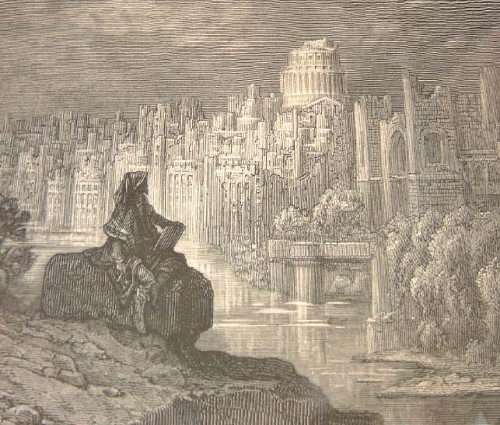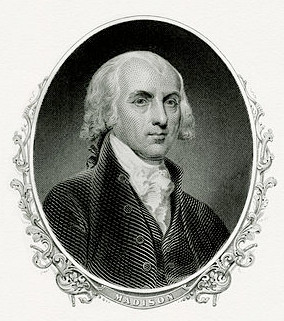
pensum
n. a piece of schoolwork imposed as a punishment

pensum
n. a piece of schoolwork imposed as a punishment
The editors of the Journal of Organic Chemistry received a novel submission in 1970 — Brown University chemists J.F. Bunnett and Francis Kearsley wrote their paper “Comparative Mobility of Halogens in Reactions of Dihalobenzenes With Potassium Amide in Ammonia” in blank verse:
Reactions of potassium amide
With halobenzenes in ammonia
Via benzyne intermediates occur.
Bergstrom and associates did report,
Based on two-component competition runs,
Bromobenzene the fastest to react,
By iodobenzene closely followed,
The chloro compound lagging far behind,
And flurobenzene to be quite inert
At reflux (-33°).
This goes on for three pages. The journal published it with a note: “Although we are open to new styles and formats for scientific publication, we must admit to surprise upon receiving this paper. However, we find the paper to be novel in its chemistry, and readable in its verse. Because of the somewhat increased space requirements and possible difficulty to some of our nonpoetically inclined readers, manuscripts in this format face an uncertain future in this office.”
(Thanks, Bob.)

In redesigning the Bank of England in the early 19th century, British architect Sir John Soane presented the governors with three sketches of the building he planned: one as it was new, another as it was weathered, and a third as a 1,000-year-old ruin.
That vision became a reality sooner than he realized — his interiors were demolished in the 1920s.
Below: Gustave Doré’s engraving The New Zealander 1872 was inspired by a remark by Thomas Macaulay: “She [the Roman Catholic Church] may still exist in undiminished vigour when some traveller from New Zealand shall, in the midst of a vast solitude, take his stand on a broken arch of London Bridge to sketch the ruins of St. Paul’s.”

See Fixer-Upper and Instant Romance.

Playing baseball for the St. Louis Browns, Eddie Gaedel had a career on-base percentage of 1.000, but most people have never heard of him.
Why? Because he had only one at-bat. Gaedel was a dwarf signed by the Browns as a publicity stunt in 1951. He had a legitimate contract, so the umpire had to let him play, but since he was only 3’7″, his strike zone measured an inch and a half.
“Three thoughts went through my mind that day,” said Frank Saucier, for whom Gaedel was pinch-hitting. “One, this is more like a carnival or a circus than a professional baseball game. Two, this is the greatest bit of showmanship I’ve ever seen. Three, this is the easiest money I’ll ever make.”
Tigers pitcher Bob Cain threw four balls, all high. The Tigers won 6-2, but Gaedel got a standing ovation. “For a minute,” he said, “I felt like Babe Ruth.” Today his jersey (number “1/8”) hangs in the Baseball Hall of Fame.
“He was, by golly, the best darn midget who ever played big-league ball,” wrote Browns owner Bill Veeck, who had cooked up the scheme. “He was also the only one.”

French civil engineer Henri Genaille introduced these “rulers” in 1891 as a way to perform simple multiplication problems directly, without mental calculation.
A set consists of 10 numbered rulers and an “index.” To multiply 52749 by 4, arrange rulers 5, 2, 7, 4, and 9 side by side next to the index ruler. We’re multiplying by 4, so go to the 4th row and start at the top of the rightmost column:

Now just follow the gray triangles from right to left:

The answer is 210996. “[Édouard] Lucas gave these rulers enough publicity that they became quite popular for a number of years,” writes Michael R. Williams in William Aspray’s Computing Before Computers. “Unfortunately he never lived to see their popularity grow, for he died, aged 49, shortly after Genaille’s demonstration.”

In September 1940 Polish army captain Witold Pilecki volunteered to be imprisoned at Auschwitz. His reports first alerted the Allies to the horrors at the camp and helped to warn the world that a holocaust was taking place.
In this episode of the Futility Closet podcast we’ll follow Pilecki into the camp, hear his reports of the atrocities he witnessed, and learn why his name isn’t better known today. We’ll also meet the elusive Pacific Northwest Tree Octopus and puzzle over how hitting a target could save thousands of lives.

James Madison wrote George Washington’s first inaugural address.
Then he wrote the House’s reply to the address.
Then he wrote Washington’s reply to the reply.
“Notwithstanding the conviction I am under of the labour which is imposed upon you by Public Individuals as well as public bodies,” Washington apologized, “yet, as you have began, so I would wish you to finish, the good work in a short reply to the … House … that there may be an accordance in this business.”
“We are in a wilderness without a single footstep to guide us,” Madison wrote to Thomas Jefferson. “Our successors will have an easier task.”
In 1974, British physician Elaine Murphy read a letter in the British Medical Journal regarding “guitar nipple,” a form of contact dermatitis found in some guitarists. Thinking the letter was a joke, Murphy composed a letter of her own and sent it in over her husband’s signature. To their surprise, the journal published it:
SIR, — Though I have not come across ‘guitar nipple’ as reported by Dr. P. Curtis (27 April, p. 226), I did once come across a case of ‘cello scrotum’ caused by irritation from the body of the cello. The patient in question was a professional musician and played in rehearsal, practice, or concert for several hours each day. — I am, etc.,
J.M. Murphy
The condition was referenced in other medical journals over the ensuing years. When it was mentioned again in BMJ in 2008 the couple admitted their hoax. “Anyone who has ever watched a cello being played would realise the physical impossibility of our claim,” Murphy, now a member of the House of Lords, wrote.
“We may have to organise a formal retraction or correction now,” said a spokesman for the journal. “Once these things get into the scientific literature, they stay there for good. But it all adds to the gaiety of life.”

asmatographer
n. a composer of songs
While on the road with his 1927 musical Funny Face, George Gershwin left “two notebooks containing at least forty tunes” in a hotel room in Wilmington, Del. “After calling the hotel and learning the notebooks could not be located, he did not seem greatly perturbed,” wrote his brother and lyricist, Ira. “His attitude is that he can always write new ones.”
George was a songwriting machine, always at work. “I can think of no more nerve-wracking, no more mentally arduous task than making music,” he said in 1930. “There are times when a phrase of music will cost many hours of internal sweating.” Though he would sometimes try ideas at the piano, he insisted that “the actual composition must be done in the brain” — the fifth and final version of “Strike Up the Band” came to him in bed, and he heard, and even saw on paper, the complete construction of Rhapsody in Blue while riding a train from New York to Boston. “Like a pugilist,” he once said, “the songwriter must always keep in training.”
Ira’s struggle was less apparent. While working on lyrics he would wander the room, singing to himself or playing the piano with one finger. A new maid once asked his wife, “Don’t Mr. Gershwin never go to work?”

By coincidence, the first and last British soldiers to be killed in action during World War I lie in graves that face one another.
British Army private John Parr was shot while on a reconnaissance patrol in Belgium on Aug. 21, 1914, 17 days after Britain declared war.
Private George Edwin Ellison was killed on patrol on the outskirts of Mons on Nov. 11, 1918, 90 minutes before the armistice came into effect.
Both are buried in the St. Symphorien military cemetery southeast of Mons, which was lost to the Germans at the start of the war and regained at the very end.